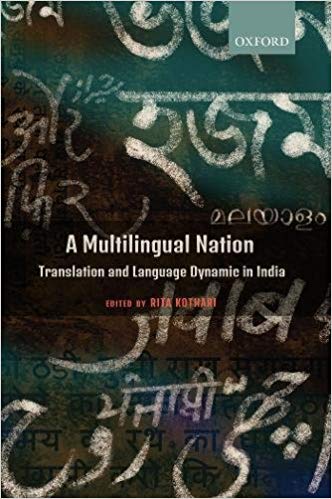We must be bilingual even in a single language, we must have a minor language inside our own language, we must create a minor use of our own language. Multilingualism is not merely the property of several systems each of which would be homogenous in itself…. Not speaking like an Irishman or a Romanian in a language other than one’s own, but on the contrary speaking in one’s own language like a foreigner…all mistranslations are good—always provided that they do not consist in interpretations, but relate to the use of the book, that they multiply its use, that they create yet another language inside its language’ (Deleuze: Dialogues 2, 4-5).
The Indian constitutional expert Granville Austin remarked that during the framing of the Indian Constitution, the only debate more explosive than property was that of language. Much water has flowed under the bridge since the late forties, and indeed one still feels very much at sea. This is because the Indian case is different from the Euro-American context wherefrom many of our formulations still derive. For the most part, Europe remains a single language-single country system; at most, in Europe as in the United States, there may be the rise of another language (for example, Spanish). In obvious distinction, India is deeply and comprehensively multilingual, with many languages having over fifty million speakers. But this fact has led to a simplistic reflex cultural pride in India’s multilinguality. Pride is no substitute for a sober, nuanced and reasonably comprehensive analysis (it would really be impossible to be comprehensive in this case), and Rita Kothari’s edited volume, A Multilingual Nation: Translation and Language Dynamic in India (Oxford, 2017) raises many issues, complicating a simple pride over India’s bi- or multilinguality.
Most of the articles depict this complex linguistic terrain. The volume consists of sixteen articles plus an Introduction and Epilogue, making it as comprehensive as an average-sized academic book can hope to be. The book rightly raises issues not only from within languages, each taken separately, but also the more difficult question of the rutted relations between languages, and over a longue duree. Though all articles have something to offer, a few stand out—for example, those that raise questions of the complications and conceptual challenges that multilingualism concretely represent. Madhav Chippali and Sundar Sarukkai submit that India must have a very different understanding of translation—translating German to Vietnamese is not like translating Tamil to Malayalam, or Sanskrit to Kannada. Where there are already prior shared intimacies (or enmities), a halo of translation-into-Tamil may be part of the very conception of an original Malayalam work. They ask what translation is when the boundaries of languages (Sanskrit and old Kannada, Tamil and Malayalam) keep shifting, when broad plot-lines of epics like the Mahabharata are shared, but there is no desire for line by line translation, when Kannada may sometimes be evoked only for a regional or aural affect rather than for itself? Language, for a writer, may be a particular world of feeling and nostalgia, rather than any oeuvre or plot, and so for them translation is conceptually prior to language, an otherness prior to self, whereby the question of identity and authority is constantly deferred. As Veena Naregal also notes, translation refers not only to literature, but also to newer modes of authority such as the secular social sciences—while ‘culture’ may have a political/electoral agency, the norm in the more everyday governance of India is still English-centred. How may there be a better give and take between the elite and the regional, the electoral and the literary-scientific? Naregal is one of the few voices in the volume that raises crucial institutional/disciplinary questions of the humanities within the broader higher education architecture.

